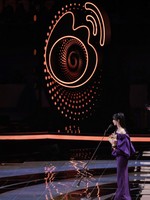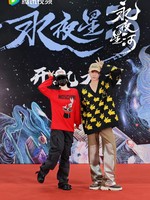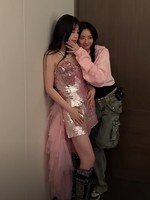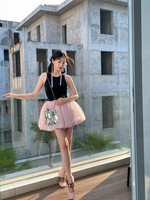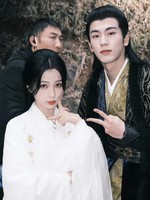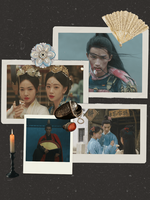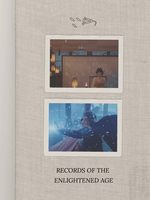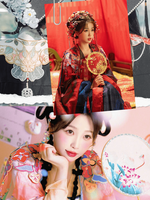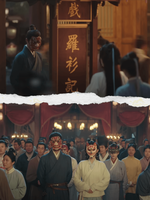Like clouds kissed by sunlight after the rain, the yunjian (云肩 yúnjiān), known in English as the ‘cloud collar,’ entered the pop culture limelight on the shoulders of Ling Miaomiao (Esther Yu) in the hit Chinese drama Love Game in Eastern Fantasy.
The yunjian is essentially a capelet-like accessory or motif design that drapes around the shoulders and encircles the neckline with intricate, symmetrical patterns. Its name in Chinese literally means ‘cloud shoulders,’ which evokes the image of wearing iridescent clouds that reflect the vibrant colors of the rainbow in the sky after the rain.
Origin and Development
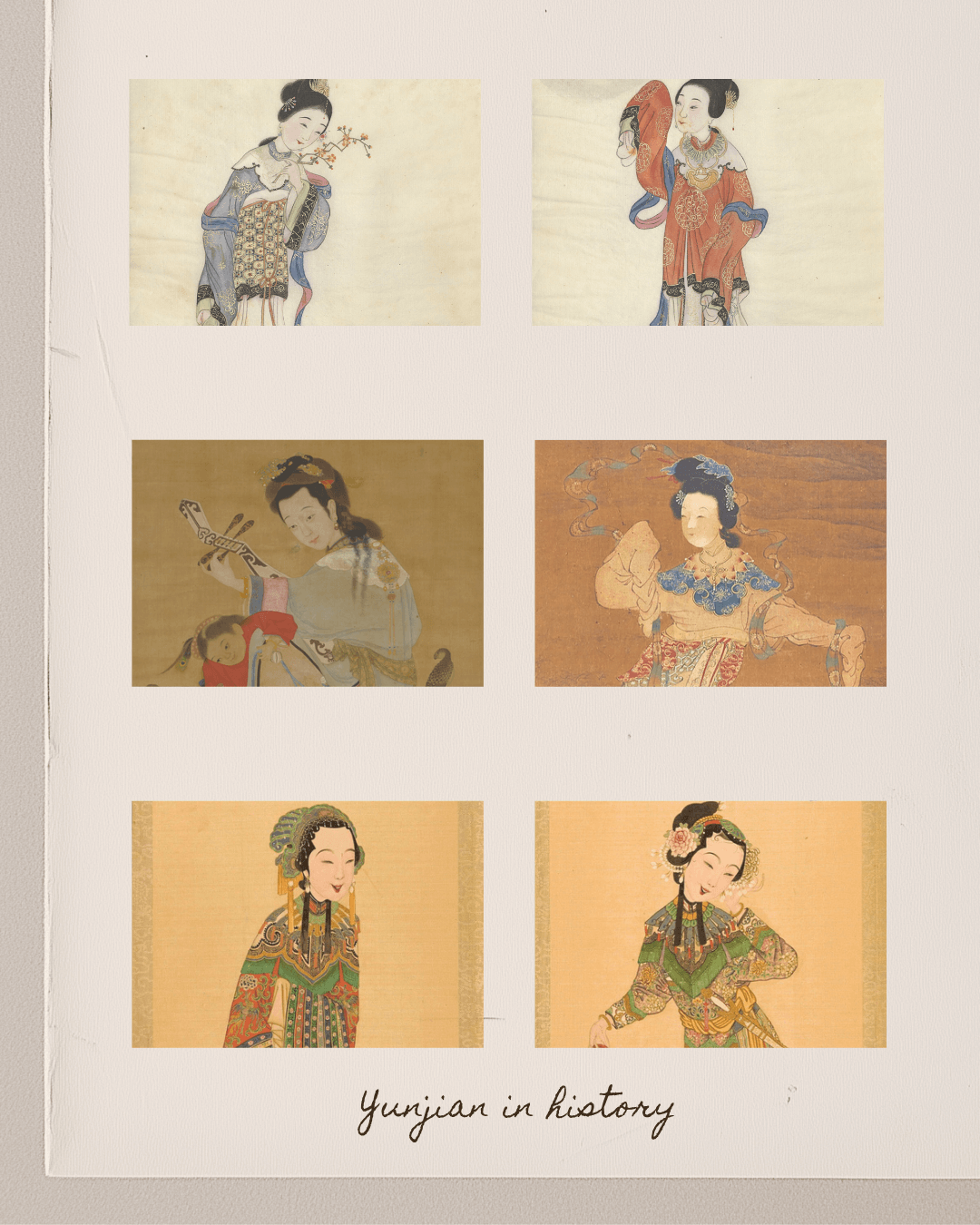
Although the yunjian is iconically associated with women’s clothing from the Ming and Qing dynasties, its origins can be traced back to much earlier periods.
Similar capelet or shawl-like designs and motifs can be found on tomb murals, figurines, and paintings from the Qin and Han dynasties, continuing through the Sui and Tang dynasties, the Five Dynasties and Ten Kingdoms period, the Song dynasty, and the Jurchen-led Great Jin dynasty.
The term yunjian emerged during the Yuan dynasty, when it became a popular motif on robes worn by both men and women of the imperial court and elite circles.
From then on, yunjian designs evolved from embroidered patterns on clothing to appliqués and eventually into separate garment pieces. The detachable yunjian became prevalent in the Qing dynasty.
Form and Construction
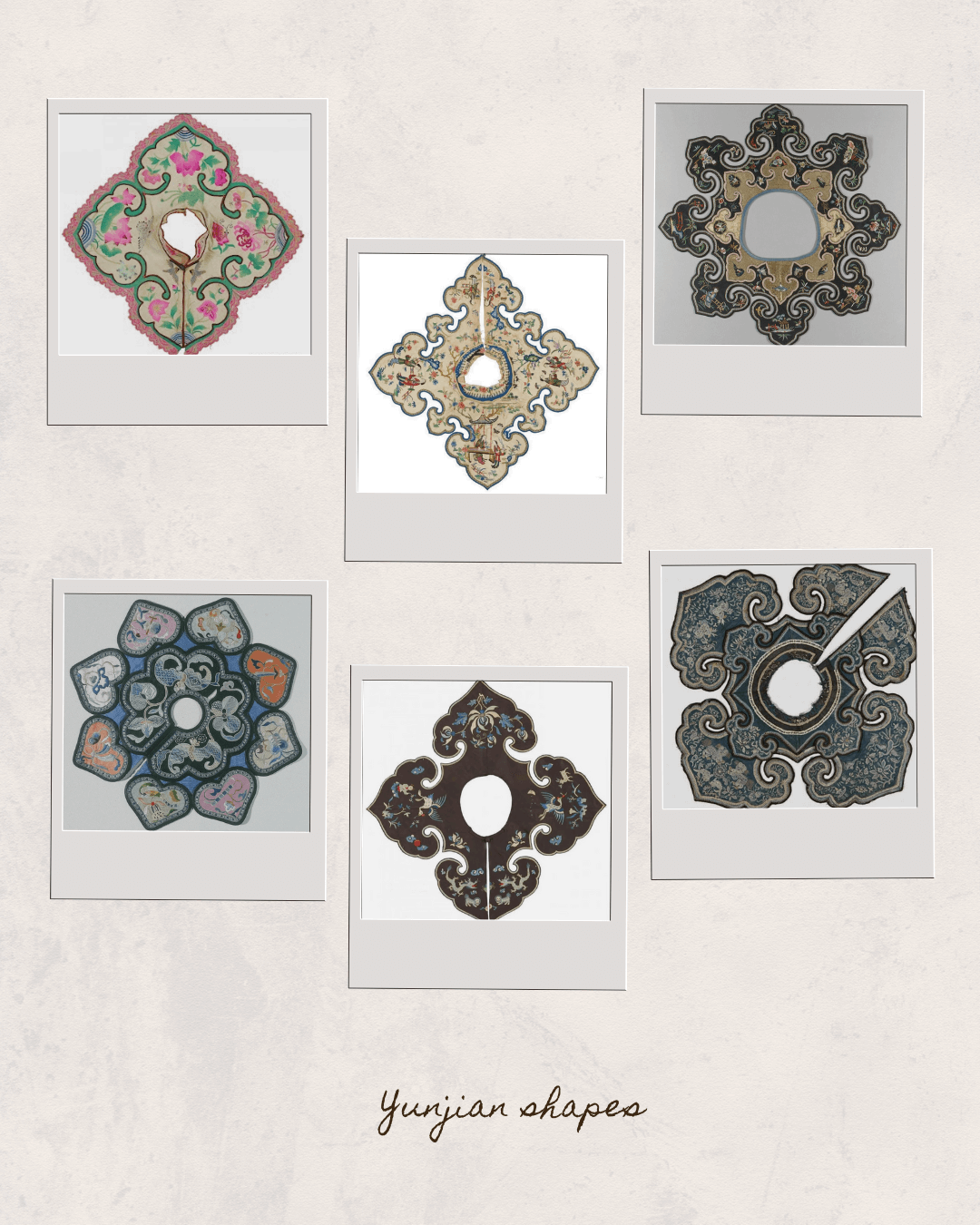
The yunjian usually consists of either four or eight sections arranged symmetrically around a circular neck opening. They come in a variety of shapes and structures, which inspired the different interpretations worn by Ling Miaomiao in the drama. These range from simple, single-piece designs to multi-layered, interconnected, and even hybrid forms, including cloud-shaped, leaf-shaped, crescent-shaped, semi-circular, and T-shaped designs.
In terms of pattern designs, a yunjian can spread outward from the neckline or draw focus inward toward the collar as the visual center.
Symmetry is the key that holds everything together. Symbolically, the yunjian embodies harmony and balance in all directions and all seasons, as well as the unity of heaven and earth.
In Folk Culture
As a separate garment piece, the original intention behind the yunjian’s design was to serve a practical purpose: to protect the collar, shoulders, and back of clothing from hair oils, as well as from exposure to wind and dust.
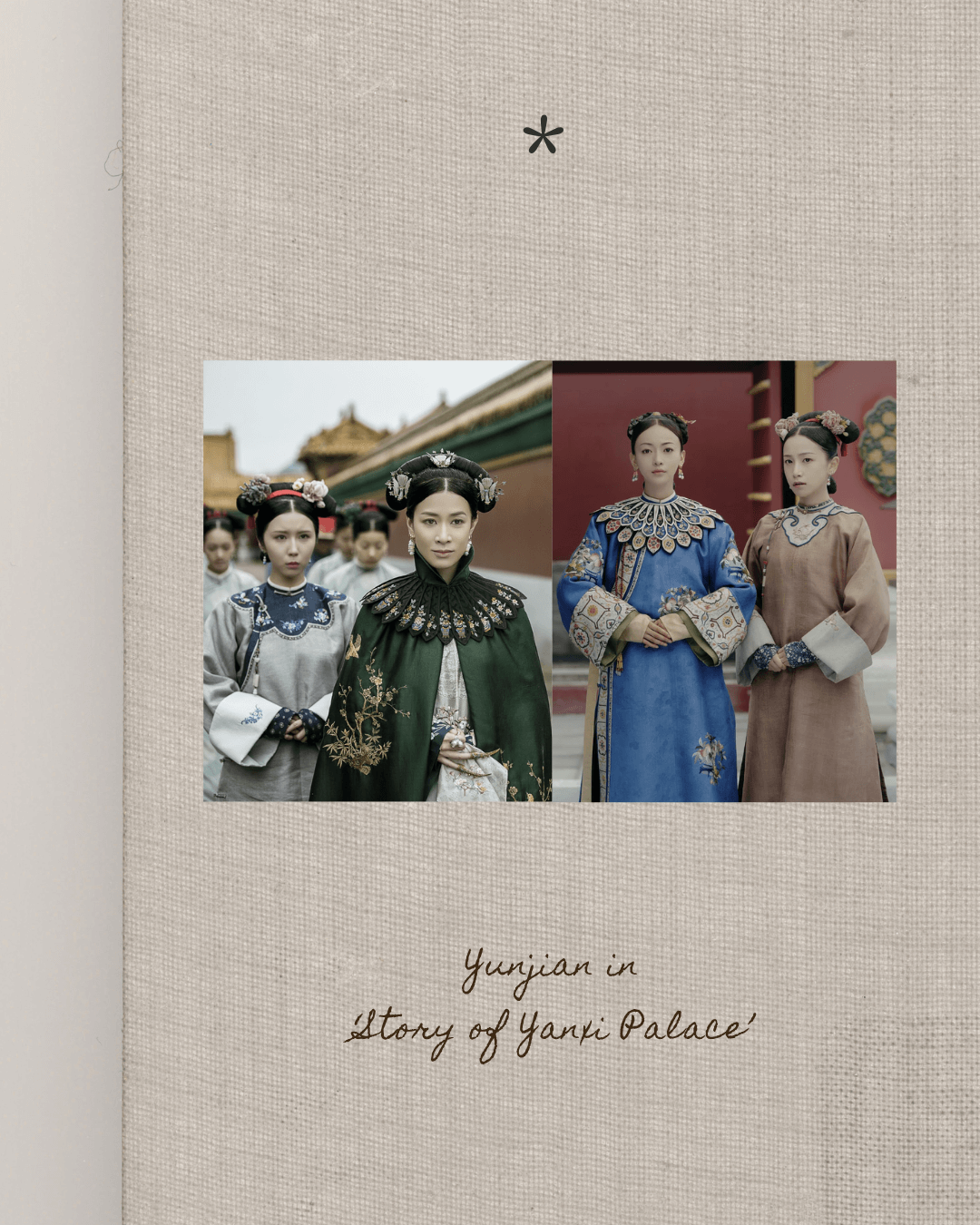
During the Qing dynasty, the yunjian became a quintessential decorative accessory for women across social classes, notably as part of ceremonial wedding attire. In folk tradition, women made their own yunjian for their wedding, which were later reworn on milestone birthdays. These cherished pieces were often buried with them as a beautiful symbol of their life and blessings to follow them beyond and into the next life.
We can spot examples of Qing-era yunjian in palace dramas, such as Story of Yanxi Palace.
The yunjian displays auspicious imagery, including plants, figures, animals, patterns, and embroidered text, symbolizing blessings and wishes for happiness, longevity, wealth, and good fortune.
Likewise, Miaomiao’s yunjian designs in the drama symbolize heartfelt wishes for a happy and healthy life, which runs through the entire story.
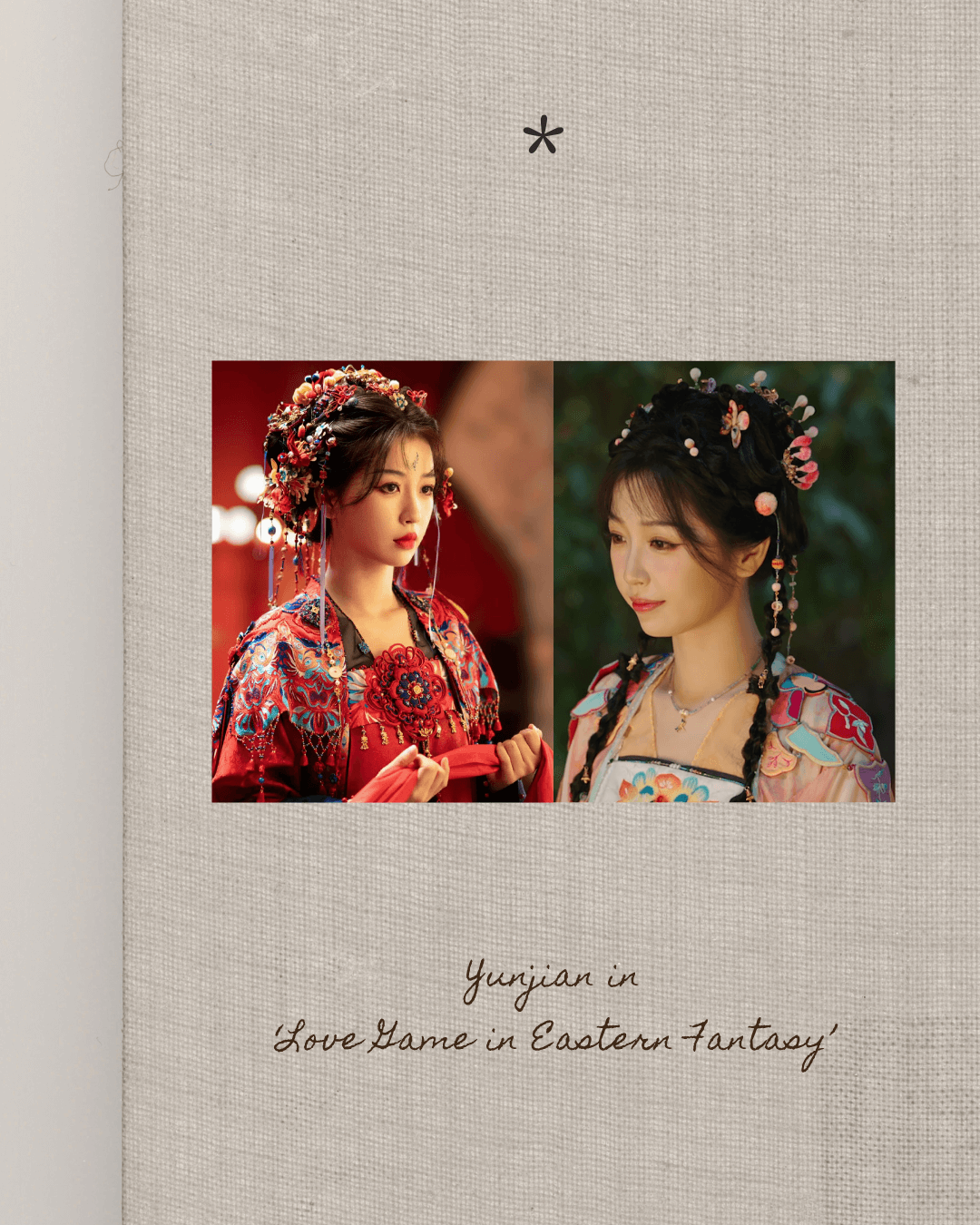
From Weddings to Graduations
Just before ‘Love Game in Eastern Fantasy’ started production, yunjian cloud collars began trending with hanfu-inspired takes on graduation gowns. This trend originated among the international Chinese student community, with some individuals creatively modifying their own gowns.
Users on the Chinese lifestyle and social media platform RedNote have been sharing posts of themselves wearing hanfu-inspired graduation gowns since 2022, gaining traction by around May to June 2023.
One of the most liked posts from this period comes from user 咕噜王王, a graduate of Northeastern University in the United States, who wore a yunjian cloud collar over her academic dress in May 2023.
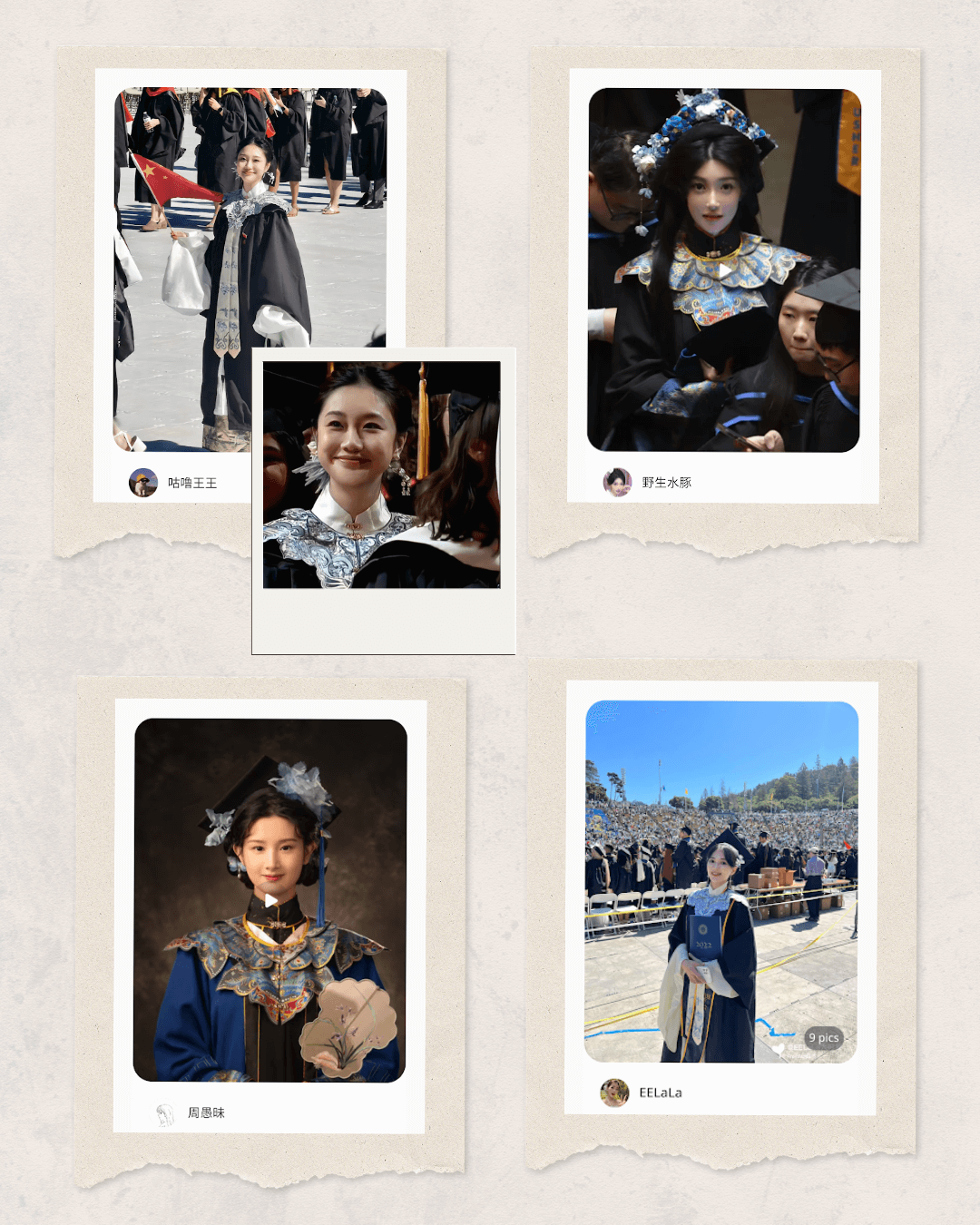
Since then, many thousands of Chinese students, both in China and around the world, have been inspired to customize their graduation robes with their own yunjian, along with mamian pleated skirts (马面裙 mǎmiànqún), and graduation caps embellished with zanhua (簪花 zānhuā) flower ornaments and DIY decorations.
The way the yunjian seamlessly complements graduation gowns and stands out makes it a perfect match for the occasion. Some graduates have shared that they wanted to connect with their heritage and express their cultural identity while studying abroad, and share something unique from their culture.
Hanfu labels and designers in China are embracing this trend, creating graduation collections with matching sets.
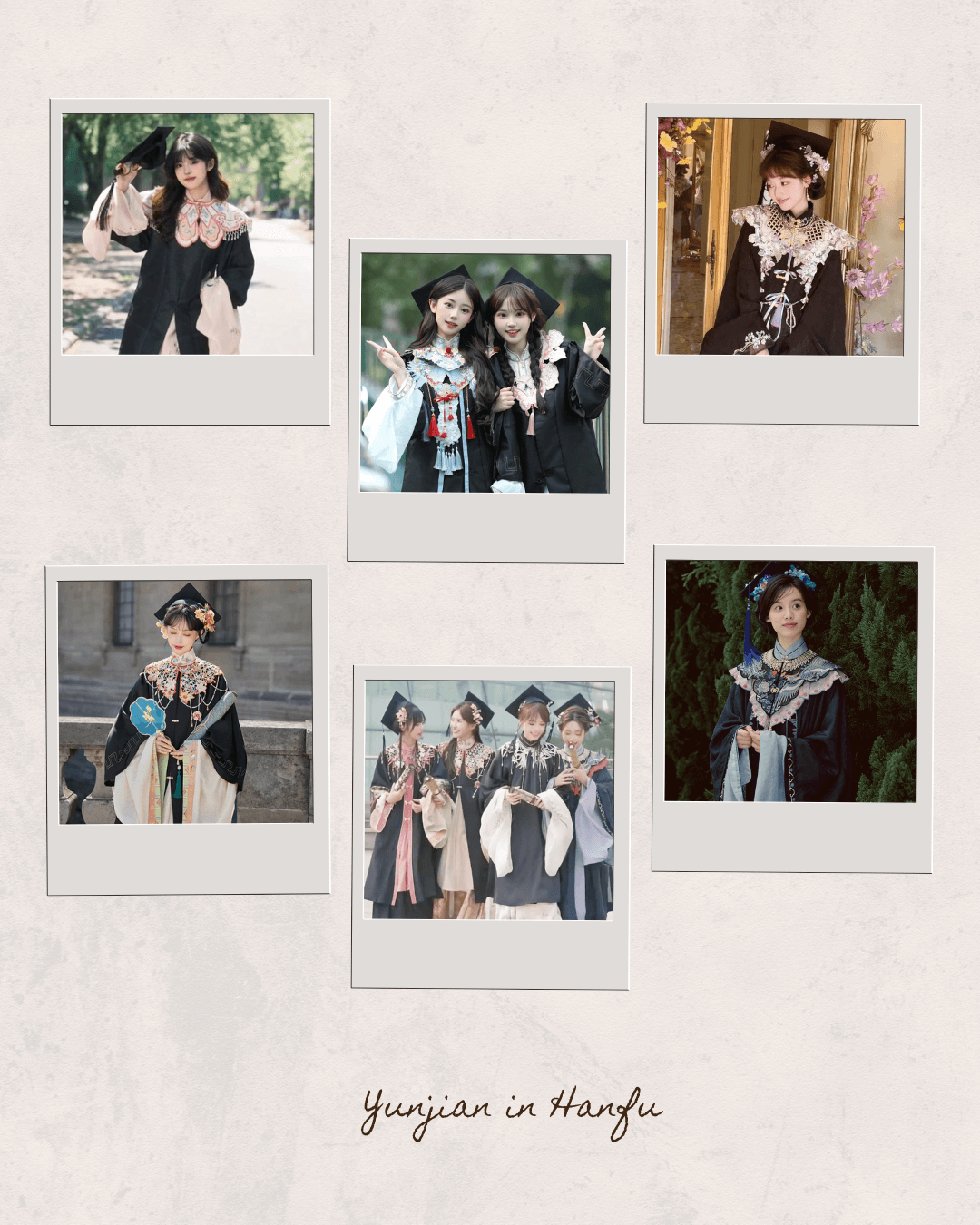
Some Chinese universities have also collaborated with local designers to incorporate yunjian and hanfu-inspired elements into their official graduation attire.
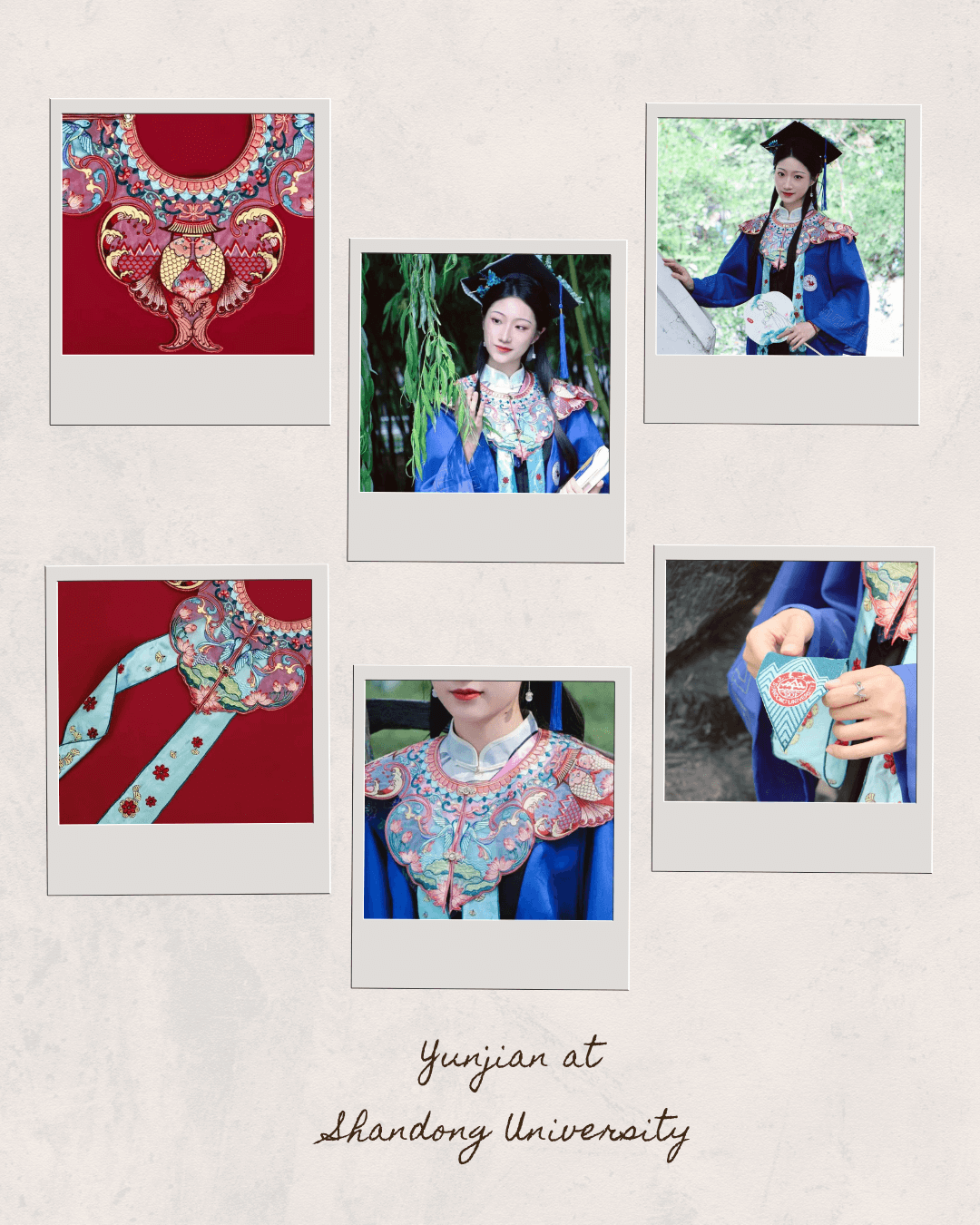
Shandong University introduced new graduation gowns featuring original yunjian cloud collars that were gifted to graduates. The university’s yunjian is adorned with auspicious motifs of peaches, fishtails, and lotus flowers, a spring swallow for good luck, and carp leaping over the dragon’s gate as a symbol of academic success and a bright future.
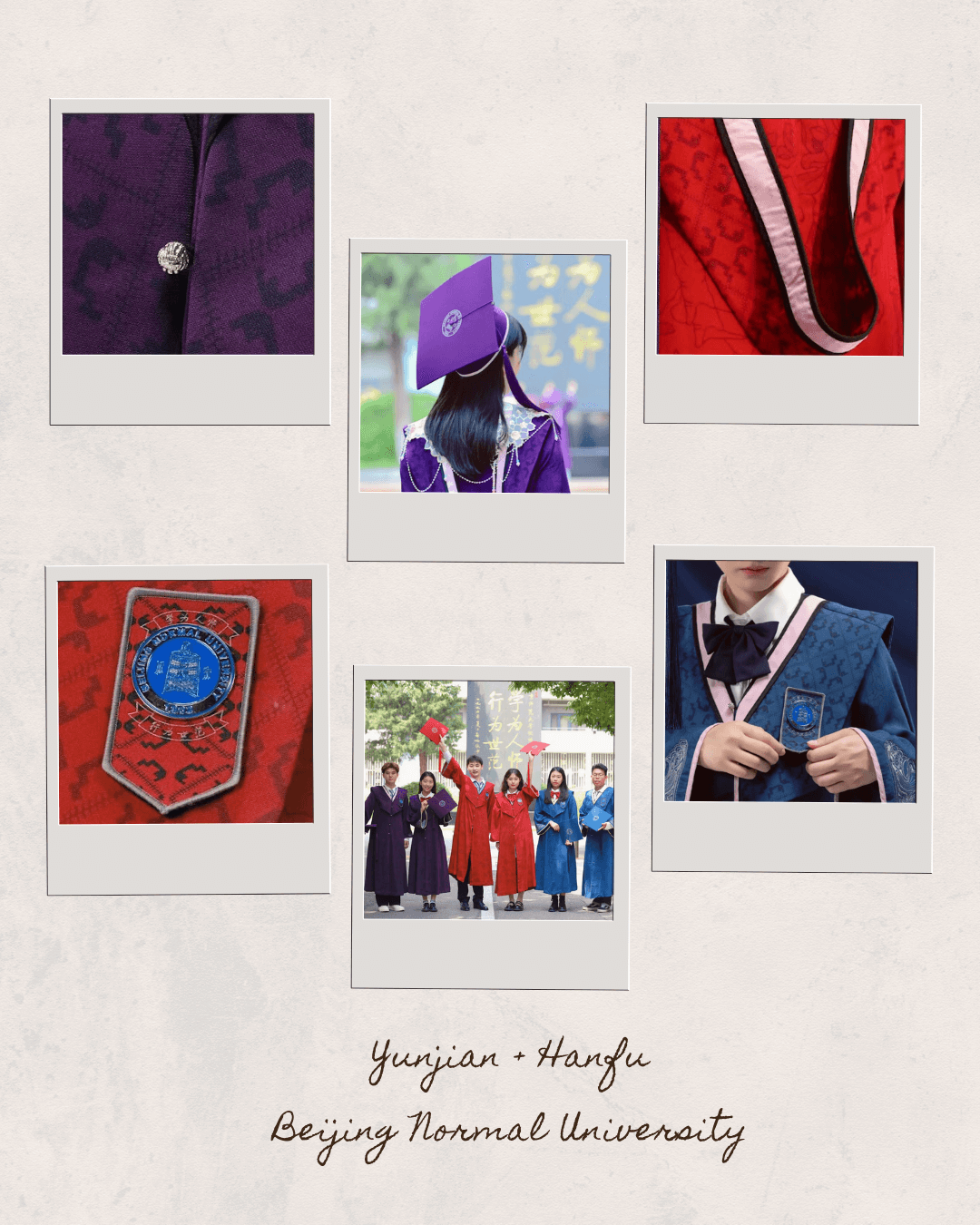
Beijing Normal University invited a design team led by Oscar-winning art director Tim Yip of ‘Crouching Tiger, Hidden Dragon’ fame to create its graduation gowns. The team incorporated a magnolia flower pattern, symbolizing the scholar’s pursuit of noble ideals, and selected colors from the traditional Chinese palette to denote academic ranks and degrees: blue (璟瑜 jǐngyú) for bachelor’s, purple (油紫 yóuzǐ) for master’s, and red (顺圣 shùnshèng) for doctoral robes. Each gown is embroidered with a student’s name and number, emphasizing individuality with tradition.
Across the board, hanfu designers, fashion designers, traditional craft artisans, and DIY enthusiasts are reimagining traditional culture, making clothing and accessories more relevant and wearable in modern life. This marks a promising step forward for creativity, especially among women artists and the global Chinese community, as they continue to shape and preserve living traditions.
Spotlight on Ling Miaomiao’s Yunjian
Ling Miaomiao wears yunjian here as part of her wedding ensemble. This yunjian features a motif of mandarin ducks playing in water, a traditional symbol of eternal love and harmony.
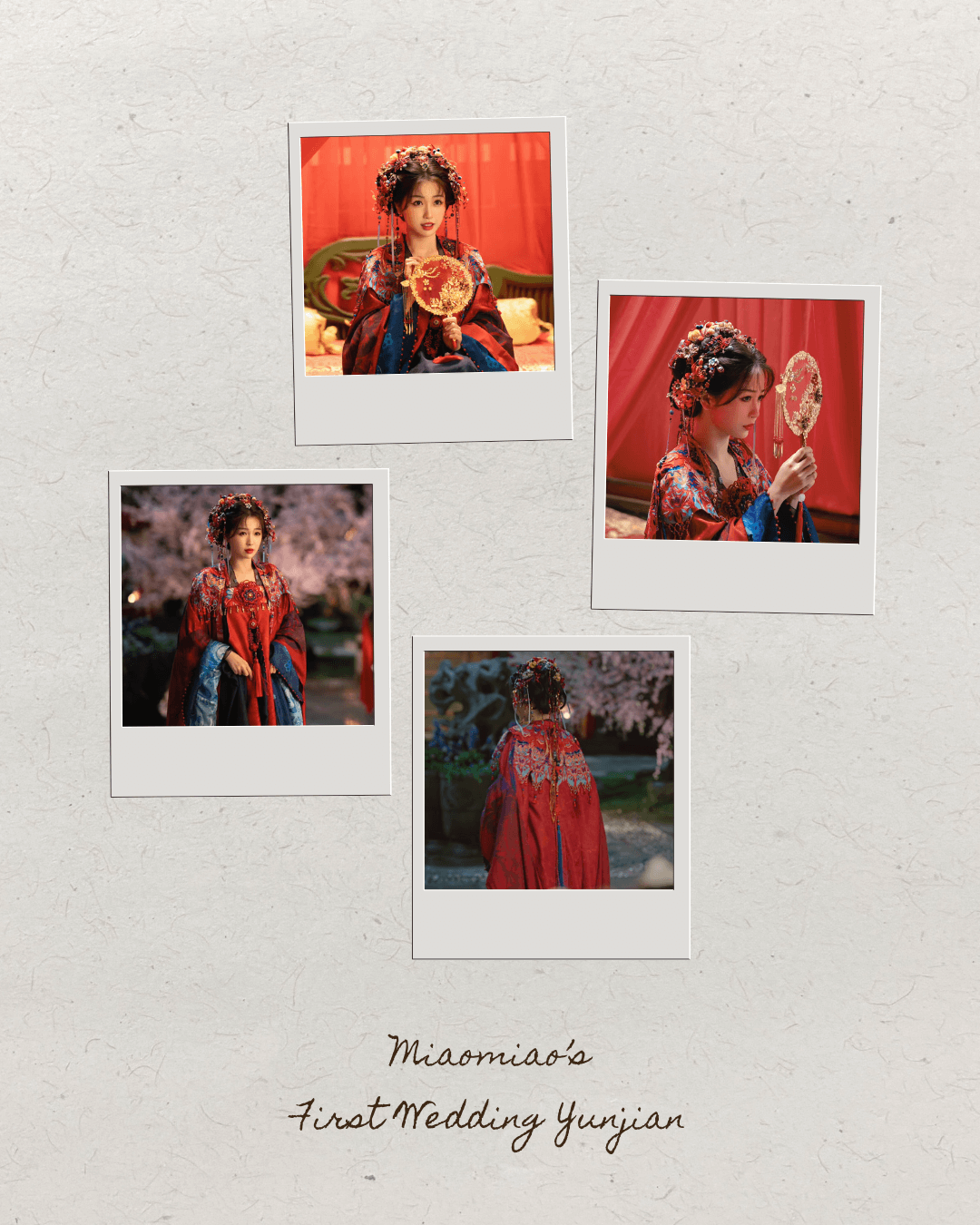
Another standout piece is the multi-layered yunjian that Miaomiao wears to the lantern festival, featuring a top layer in a connected-style design. The linked segments resemble flower petals falling gracefully around her shoulders in a T-shape. Her yunjian also incorporates decorative elements traditionally found on cloud collars, such as tassels and beads.
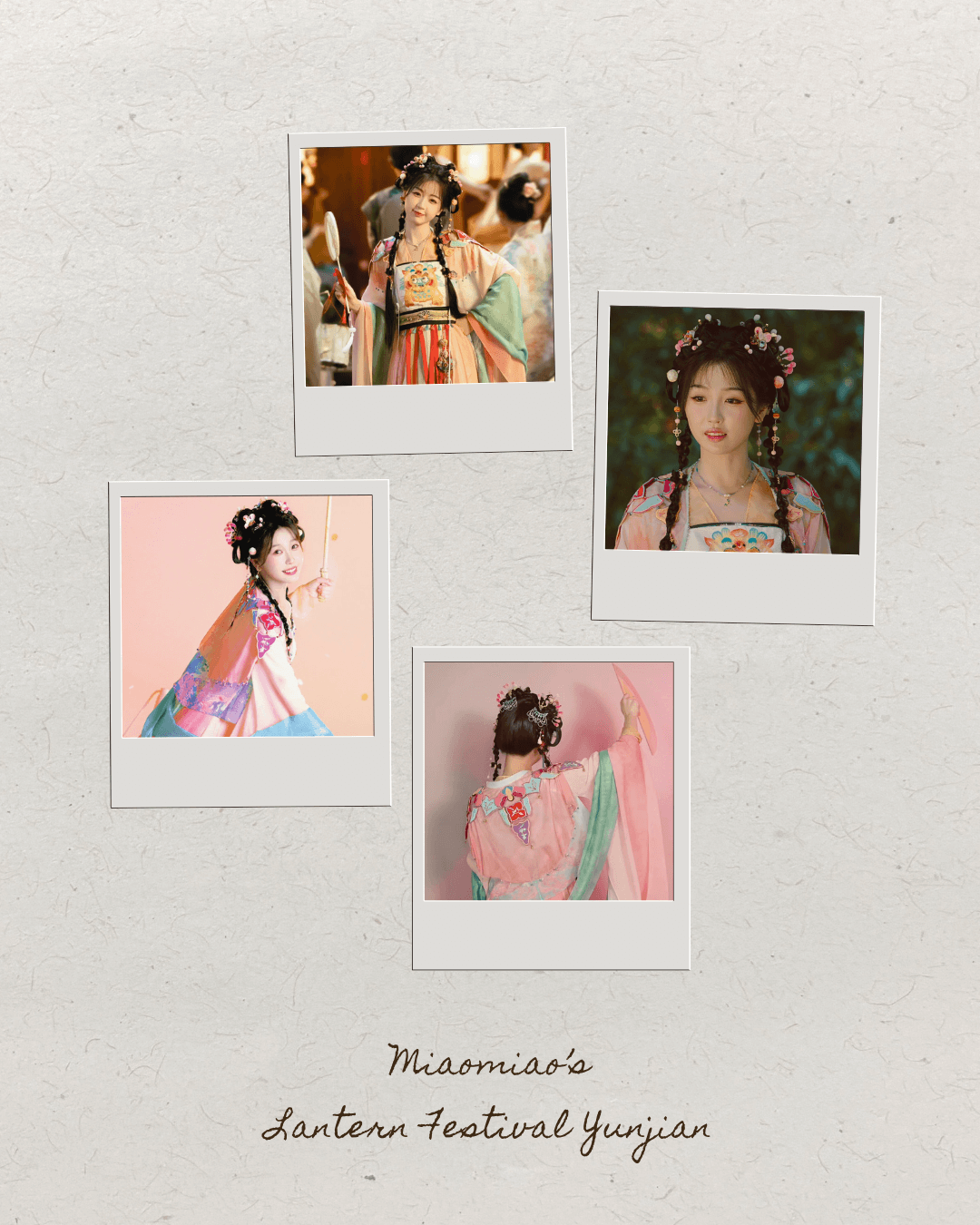
From its role in honoring tradition and marking life’s celebrations, to its reinvention in C-dramas and emergence as a creative symbol of women’s academic achievement, the yunjian cloud collar remains a canvas linking craft, culture, and personal expression, drifting with ease between the past and the present.


